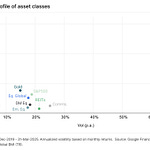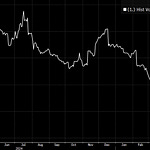To investors,
The Federal Reserve is tasked with fostering “the stability, integrity, and efficiency of the nation's monetary, financial, and payment systems so as to promote optimal macroeconomic performance.” That is a lot of complex jargon to explain a simple concept — the Fed manages the country’s monetary system.
This management is expressed through Congress’ dual mandate to the Fed: (1) maintain stable prices and (2) pursue maximum employment.
It is obvious that the Fed has failed miserably at the stable prices mandate over the last three years. We saw inflation peak at 40+ year highs and the average American consumer is paying significantly higher prices for staple goods. Additionally, this failure on price stability creates significant problems for businesses that now struggle with the ever-changing nature of their input costs.
The inflation challenges have been well covered, but what about the employment mandate?
If we go back to January 2020, the unemployment rate was sitting at a historic low of 3.6%. The pandemic, and ensuing government-mandated lock-downs, created an explosion of layoffs and unemployment claims. At one point, there were 6.6 million new unemployment claims per week. This led to the unemployment rate spiking to just under 15% by April 2020 — to put the severity of the spike in perspective, this increase in unemployment over a 60 day period outpaced the entire increase in unemployment over the first 18 months of the Great Depression. Not a great situation.
Thankfully, the Federal Reserve’s monetary policy decisions, coupled with fiscal policy and an ensuing historic economic rally, led to an impressive recovery in employment data. We currently sit at a 50+ year low of 3.4% unemployment in the United States, which is even better than the 3.6% we had achieved right before the pandemic era began.
This accomplishment will be viewed as a win by everyone except the central bank. Their theory is that a strong labor market, where unemployment is low, leads to higher inflation. If that sounds weird, here is Nik Popli’s explanation from a recent TIME article:
“The Fed’s long-standing belief is that a job market with strong hiring and increased wages typically fuels higher inflation. Under this economic model, consumers are more likely to spend freely when they have higher incomes, and companies tend to raise their prices to help cover climbing labor costs. It might seem odd to regard wage increases as a problem, but the Fed’s approach highlights the harsh trade-offs at the heart of the battle against inflation: To keep prices stable, it needs to be harder for workers to find a job and get a pay raise, according to the Fed.
The central bank has been aggressively increasing interest rates to slow the economy and bring inflation back to around its 2% target. Last Wednesday, the Fed raised its benchmark interest rate for an eighth time since March, although at a slower pace, and indicated that further increases were probable. Fed Chair Powell has suggested that hard times are coming, particularly for workers. “I wish there were a completely painless way to restore price stability,” Powell said at a news conference on Dec. 14. “There isn’t.””
Remember, the Fed’s dual mandate is stable prices and maximum employment. They are failing at stable prices, but achieving maximum employment at a level not seen in decades. Unfortunately, the Fed is going to erode progress on the employment side in order to get the inflation under control. This is the tightrope act that is required from central banks who are tasked with overseeing a complex economic machine.
Don’t forget one important detail though…












